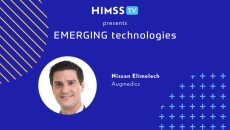Quality and Safety
This month, companies including Oracle, Medtronic, Atropos, Elation, LeanTaas, Palantir and more released artificial intelligence and virtual reality enhancements that offer health systems a menu of efficiency tools.
Success Stories & ROI
The Illinois-based health system has, among many wins, retained 2,400 clinicians and staff who, by traditional patterns, it would not have expected to stay. And it has seen more than a 200% return on every dollar spent on employee tuition.
It adds a layer of safety at the point of compounding.
A VR tool at Moffitt Cancer Center helped relieve a patient's anxiety about undergoing treatment by enabling him to experience a simulation of the procedure. Dr. Sarah Hoffe, Moffitt's interim chair of GI oncology, shares more.
Red Cell Partners will provide artificial intelligence products for rapid real-world testing by the university's Health AI Assurance Laboratory. UMass will also provide data for assurance testing and receive fee-based reimbursement for the lab's services.
Developed with input from experts at 17 organizations, the open-source blueprint aims to establish a common set of expectations for what moves a healthcare organization from artificial intelligence experimentation to real-world integration.
The company's augmented reality surgical technology allows surgeons see a virtual spine overlay directly on a patient during an operation, eliminating the need to look at a monitor. Founder Nissan Elimelech explains.
Working with Coalition for Health AI, the standards accreditation group says it will advance best practices with a suite of new playbooks and tools, as well as a new evidence-based certification program.
Informatics leaders also have to be closely invested in their organization's goals, says Dr. Robert W. Warren, who offers advice drawn from a long career on bridging clinical and technological roles, making tough decisions and being a team leader.
Success Stories & ROI
Heart to Heart Hospice has achieved three of its top priorities, including reducing documentation time by almost 30 minutes and improving care planning – which speaks to the operational and compliance impact the technology has delivered.







